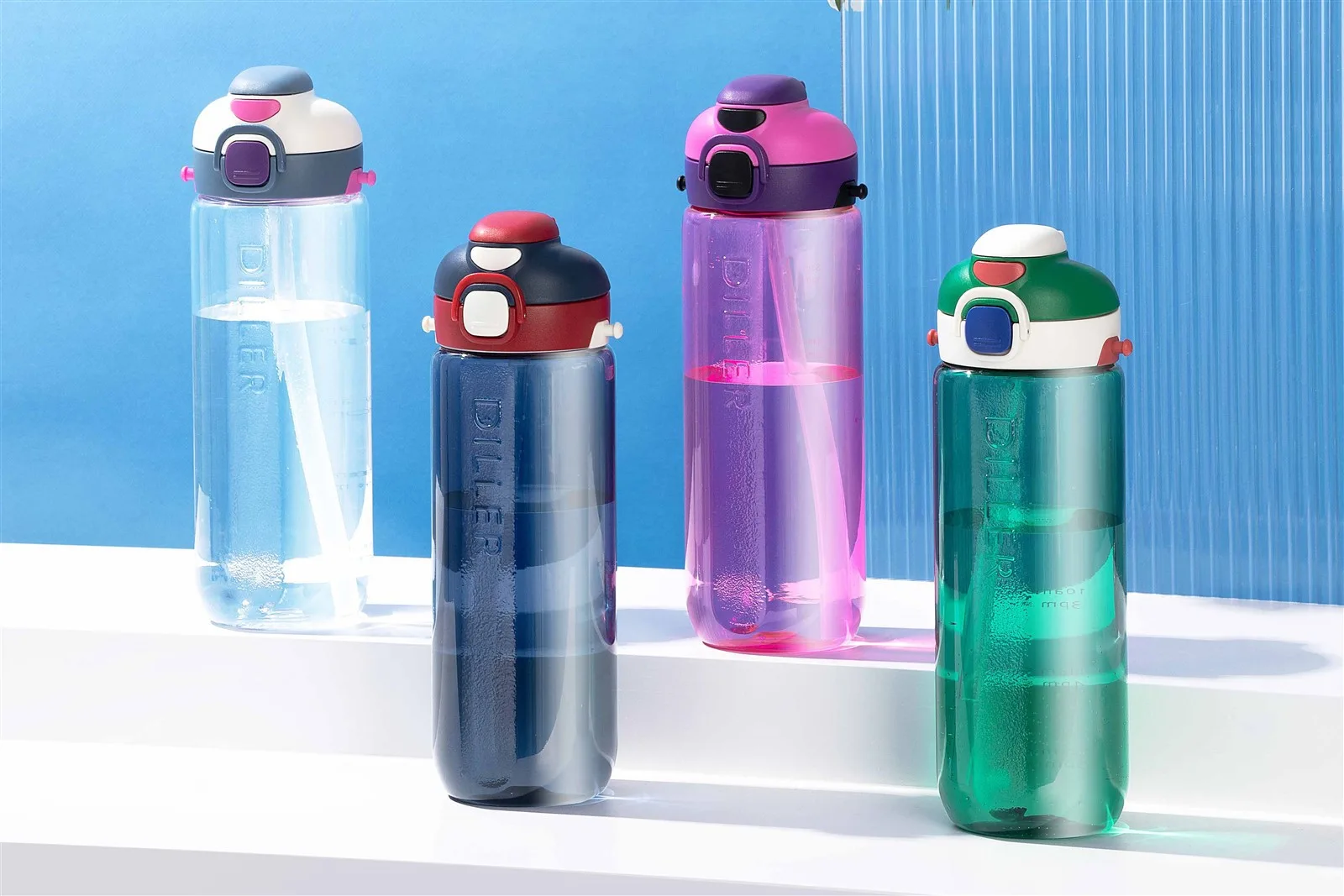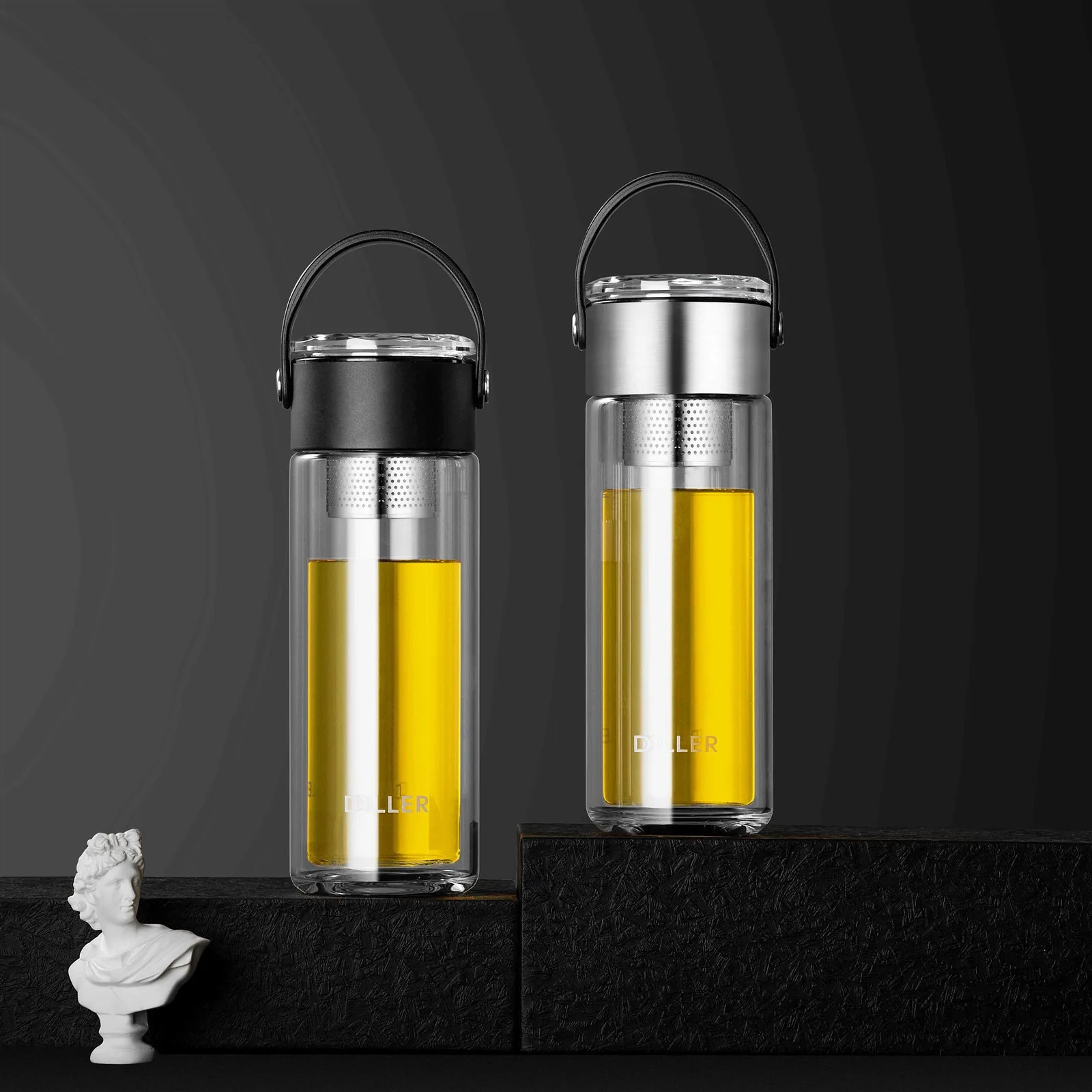As an essential item in our daily life, the selection of water bottles’ materials will affect their convenience, safety, and environmental friendliness. This article mainly discusses the different materials of plastic cups and glass cups, and their respective advantages and disadvantages.
Tritan is a new type of plastic material developed by Eastman Corporation in the United States. It has various excellent characteristics, including impact resistance, heat resistance, dishwasher washing resistance, chemical corrosion resistance, UV radiation resistance, odorless, lightweight and transparent, etc.
The main component of Tritan is copolyester, which is polymerized from dimethyl terephthalate (DMT), adipic acid (HexADecarboxylic acid), and ethylene glycol (EG). This material has excellent transparency and toughness, and can be used to make various daily necessities, such as water cups, milk bottles, tableware, sports equipment, etc.
Tritan material does not contain harmful substances such as BPA during production, making it very safe and environmentally friendly. At the same time, it also meets the strict standards of agencies such as the FDA, ASTM, and NSF in the United States, making it safe to use.
It should be noted that although Tritan material has high chemical corrosion resistance, it is still necessary to avoid prolonged contact with high-temperature, acidic or alkaline substances during use to maintain its excellent properties.
PPSU is a type of polyphenylene sulfone (PPSU) material, also known as polyphenyl sulfone. It is an amorphous thermoplastic with high transparency, high hydrolysis stability, high temperature resistance, corrosion resistance, impact resistance, flame retardancy, and other characteristics.
The chemical structure of PPSU material makes it highly stable and resistant to chemical corrosion, and can withstand the erosion of various chemical substances, including strong acids, alkalis, salts, oils, etc. In addition, PPSU also has excellent mechanical, electrical, and wear resistance, which can be used to make various high demand engineering parts, medical devices, etc.
PPSU materials do not contain harmful substances such as BPA during the production process, making them very safe and environmentally friendly. At the same time, it also meets the strict standards of agencies such as the FDA, ASTM, and NSF in the United States, making it safe to use.
It should be noted that although PPSU materials have high chemical corrosion resistance, it is still necessary to avoid prolonged contact with high-temperature, acidic or alkaline substances during use to maintain their excellent properties. Meanwhile, due to the high cost of PPSU materials, it is necessary to consider a balance between economic cost and performance when using them.
PC (polycarbonate) is a common thermoplastic material with excellent mechanical properties, impact resistance, heat resistance, cold resistance, flame retardancy, and resistance to ultraviolet radiation.
PC material has high strength and strong impact resistance, which can withstand external impact and extrusion. At the same time, it has high heat resistance and can work at high temperatures without being easily deformed or cracked. In addition, PC materials also have good cold resistance and can maintain stable performance at low temperatures. In addition, PC materials also have flame retardancy, which can reduce the burning speed in the event of a fire and prevent the rapid spread of the fire.
PC materials are widely used in various fields, such as electronic products, automotive parts, medical devices, food containers, sports equipment, etc. It can be used to make computer casings, phone casings, car lampshades, baby bottles, tableware, and other products.
It should be noted that although PC materials have high performance and stability, they still need to avoid prolonged contact with high-temperature, acidic or alkaline substances during use to maintain their excellent properties. Meanwhile, due to the high cost of PC materials, it is necessary to consider a balance between economic cost and performance when using them.
High boron silicon is a type of glass material that contains over 13% boron and over 80% silicon. It has high heat resistance, high impact resistance, high transparency, and good chemical stability.
High borosilicate glass can be applied in various high-temperature, high-strength, and chemically stable environments, such as laboratory equipment, pharmaceutical containers, food containers, chemical containers, etc. At the same time, high borosilicate glass can also be used to manufacture heat-resistant appliances such as lamps, baking pans, and baking utensils, as well as glass products for special purposes such as solar water heaters, glass tubes, and aquariums.
High borosilicate glass has high chemical stability and can withstand significant temperature differences, making it less prone to cracking. At the same time, the heat resistance and impact resistance of high borosilicate glass also make it an ideal material for making high-temperature and high-strength containers. In addition, high borosilicate glass also has high transparency and good environmental performance, which can meet people’s needs for quality of life and environmental awareness.
In short, high borosilicate glass is a glass material with broad application prospects, which can meet the needs of different fields and has excellent performance and characteristics.
High borosilicate glass cup is a heat-resistant glass cup with high chemical and thermal stability, which can withstand sudden temperature changes and is not easy to crack.
The advantages of high borosilicate glass cups include:
1. Heat resistance: High borosilicate glass cups can withstand sudden temperature changes and are not easily cracked.
2. Chemical stability: High borosilicate glass cups have high stability against chemical substances such as acids, alkalis, and organic solvents, and are not easily corroded.
3. Thermal stability: High borosilicate glass cups are not easily deformed at high temperatures and can be safely used for microwave heating.
4. Transparency: High borosilicate glass cups have high transparency and can clearly observe the liquid inside the cup.
5. Strength: High borosilicate glass cups have high strength and hardness, making them less prone to cracking.
High borosilicate glass cups are widely used in laboratory, medical, food, beverage and other fields, for making instruments such as test tubes, beakers, reagent bottles, tea cups, etc. At the same time, high borosilicate glass cups are also increasingly popular among people due to their aesthetic, environmental protection, safety and other characteristics.



